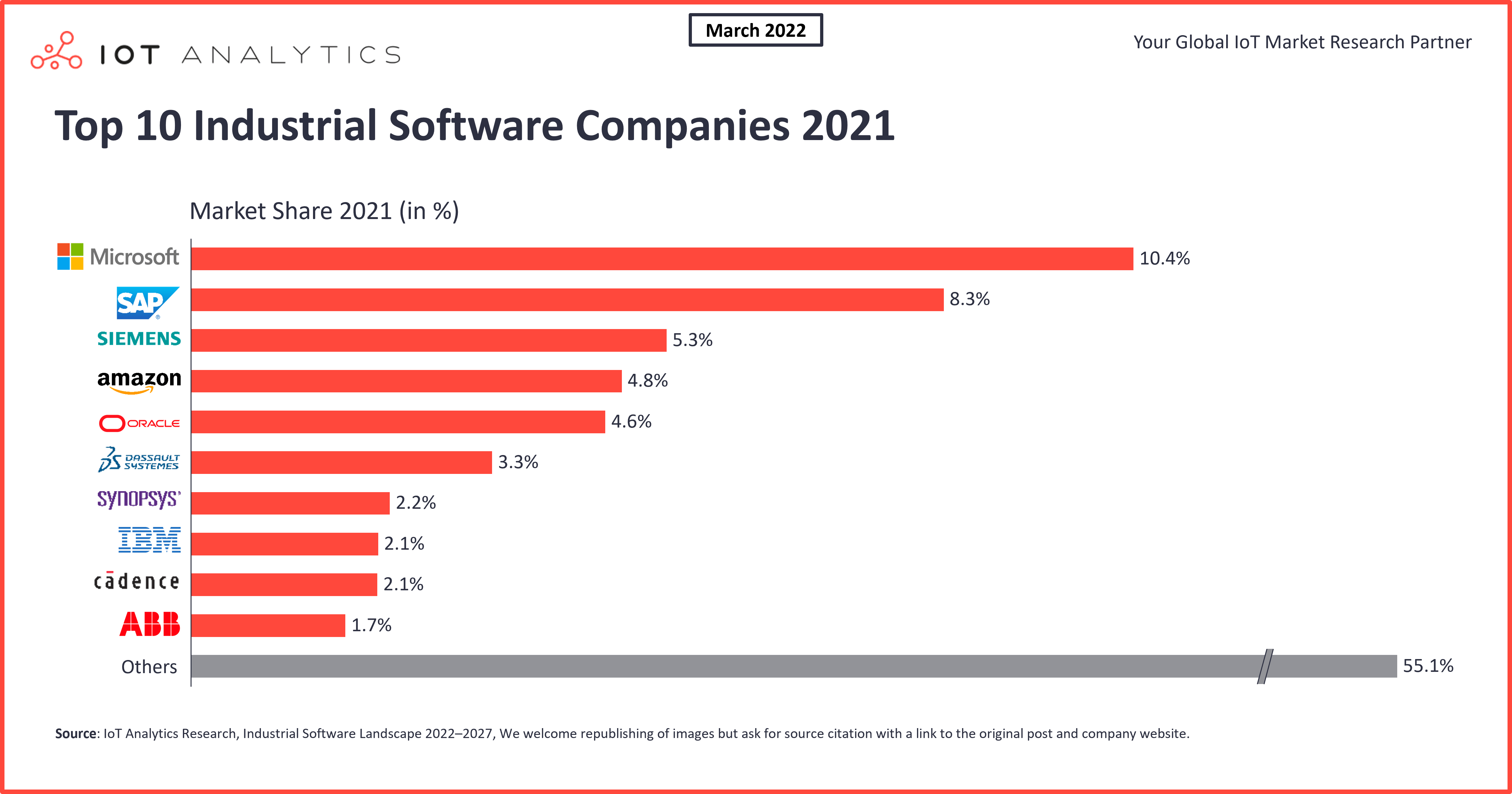In the ever-evolving world of technology, it’s crucial to be familiar with the various software used in the IT industry. These software programs are the backbone of many businesses, enabling them to streamline their operations, increase productivity, and stay ahead in a competitive market. From project management tools to programming languages, there is a wide array of software options that professionals in the IT industry utilize to bring their innovative ideas to life. Whether you’re a seasoned IT professional or just starting your journey in this field, understanding the software landscape is essential to thrive in the digital age.
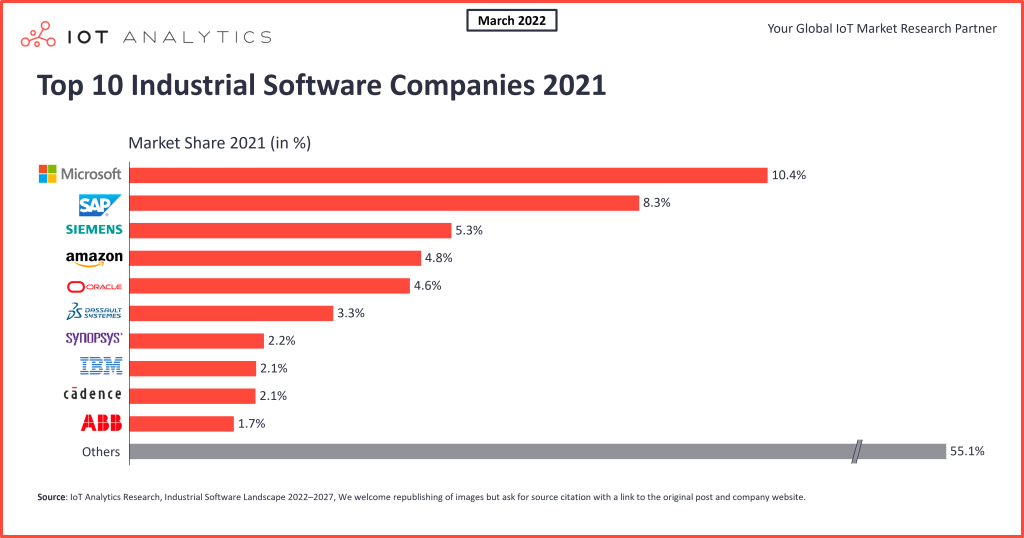
This image is property of iot-analytics.com.
Operating Systems
Windows
Windows is one of the most widely used operating systems in the IT industry. Known for its user-friendly interface, Windows provides a familiar environment for users and offers a range of applications and software compatibility. With regular updates and security patches, Windows ensures a smooth and secure computing experience. It also supports a wide range of hardware devices and has extensive support and documentation available, making it a popular choice for both individuals and businesses.
Mac OS
Mac OS, developed by Apple, is another popular operating system used in the IT industry. Known for its sleek and intuitive design, Mac OS offers seamless integration with other Apple devices and services. Mac OS provides a stable and secure computing environment, with a focus on user experience and creativity. It is widely used in industries such as design, marketing, and media production due to its powerful multimedia and graphic capabilities.
Linux
Linux, an open-source operating system, is widely used in the IT industry, especially for server environments and web development. Known for its stability, security, and flexibility, Linux offers a range of distributions that cater to various needs and preferences. It provides extensive command-line capabilities and allows users to have complete control over their system. Linux is often used in enterprise-level systems and is popular among developers for its compatibility with programming languages and tools.
Development Tools
Integrated Development Environments (IDEs)
IDEs are comprehensive software tools that provide programmers with a complete integrated environment for software development. They typically include source code editors, compilers, debuggers, and build automation tools, among other features. Popular IDEs used in the IT industry include Microsoft Visual Studio, JetBrains IntelliJ IDEA, and Eclipse. These IDEs provide a range of features to streamline the development process and enhance productivity.
Code Editors
Code editors are lightweight software tools that are primarily focused on editing and writing code. Unlike IDEs, code editors do not usually include built-in compilers or debugging tools. They are often used by developers who prefer a minimalist and customizable environment. Some popular code editors in the IT industry include Visual Studio Code, Sublime Text, and Atom. Code editors offer features such as syntax highlighting, code completion, and customization options to enhance productivity.
Version Control Systems (VCS)
Version Control Systems (VCS) are essential tools for managing and tracking changes to source code and other files. They allow multiple developers to work on the same project simultaneously, keeping track of changes and providing a centralized repository for code collaboration. Git, developed by Linus Torvalds, is one of the most widely used VCS in the IT industry. Other popular VCS include Subversion (SVN) and Mercurial. VCS provide features such as branching, merging, and conflict resolution, ensuring efficient and organized code management.
Database Management Systems (DBMS)
Relational DBMS
Relational Database Management Systems (DBMS) are widely used in the IT industry for storing and managing structured data. They use tables to organize data into rows and columns, allowing for efficient querying and data retrieval. Examples of popular relational DBMS include Oracle Database, MySQL, and Microsoft SQL Server. Relational DBMS provide features such as data integrity, transaction management, and support for complex queries, making them suitable for a wide range of applications.
NoSQL DBMS
NoSQL (Not only SQL) Database Management Systems are used for managing unstructured and semi-structured data. Unlike relational DBMS, NoSQL DBMS do not rely on the traditional table-based structure and use different data models, such as key-value, document, columnar, or graph-based. Examples of popular NoSQL DBMS include MongoDB, Cassandra, and Apache HBase. NoSQL DBMS provide scalability, high performance, and flexibility, making them suitable for handling large volumes of data and distributed systems.
Cloud-based DBMS
Cloud-based DBMS are database management systems that are hosted and accessible through cloud computing platforms. They offer the advantage of scalability, flexibility, and reduced infrastructure costs. Examples of cloud-based DBMS include Amazon Aurora, Google Cloud Spanner, and Microsoft Azure Cosmos DB. Cloud-based DBMS provide features such as automatic backups, data replication, and global scalability, making them ideal for businesses with dynamic and distributed data requirements.
Networking and Server Management
Network Monitoring Tools
Network monitoring tools are used to monitor and analyze network infrastructure, ensuring the smooth operation and performance of network devices and services. These tools provide real-time insights into network traffic, device health, and identify potential issues or vulnerabilities. Examples of network monitoring tools include Nagios, Zabbix, and SolarWinds. Network monitoring tools offer features such as network traffic analysis, device performance monitoring, and alerting, enabling efficient network management and troubleshooting.
Firewalls
Firewalls are an essential component of network security, used to monitor and control incoming and outgoing network traffic based on predefined security rules. They protect networks from unauthorized access, malware, and other threats. Examples of popular firewall software include Cisco ASA, pfSense, and Fortinet FortiGate. Firewalls provide features such as traffic filtering, intrusion prevention, and virtual private network (VPN) support, ensuring network security and protecting sensitive data.
Virtualization Software
Virtualization software enables the creation and management of virtual machines (VMs), allowing multiple operating systems to run on a single physical server or computer. This technology provides advantages such as resource optimization, hardware independence, and system consolidation. Examples of virtualization software include VMware vSphere, Microsoft Hyper-V, and Oracle VirtualBox. Virtualization software offers features such as virtual machine provisioning, live migration, and high availability, making it an indispensable tool for server management and resource utilization.
Server Management Tools
Server management tools are used to monitor, configure, and administer server systems, ensuring optimal performance and availability. These tools provide centralized control and automation for server administration tasks. Examples of server management tools include Microsoft System Center, Puppet, and Ansible. Server management tools offer features such as server monitoring, configuration management, and software deployment, allowing efficient server administration and reducing manual effort.
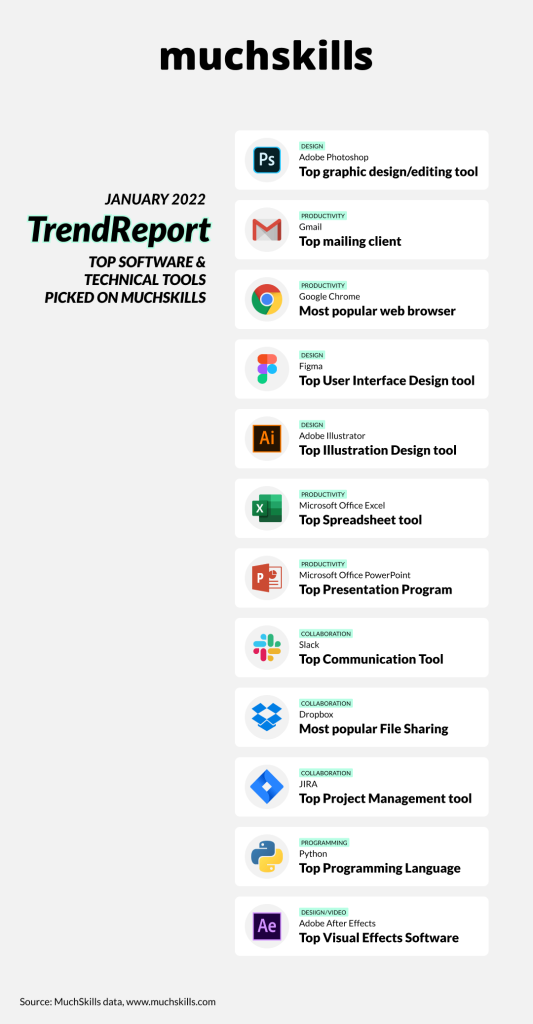
This image is property of global-uploads.webflow.com.
IT Help Desk and Support
Ticketing Systems
Ticketing systems are used by IT help desks to manage and track user requests or incidents. They provide a centralized platform for submitting, assigning, and resolving support tickets. Ticketing systems help streamline support workflows, ensure accountability, and provide a consistent customer service experience. Examples of ticketing systems include Jira Service Management, Freshdesk, and Zendesk. Ticketing systems offer features such as ticket assignment, service level agreement (SLA) management, and knowledge base integration, improving help desk efficiency and customer satisfaction.
Remote Desktop Tools
Remote desktop tools allow IT support personnel to access and control remote computers or devices to troubleshoot issues or provide assistance. These tools enable remote access and collaboration, eliminating the need for physical presence. Examples of remote desktop tools include TeamViewer, Remote Desktop Protocol (RDP), and AnyDesk. Remote desktop tools offer features such as screen sharing, file transfer, and chat functionality, facilitating remote IT support and troubleshooting.
Troubleshooting Software
Troubleshooting software tools are used to diagnose and resolve issues related to hardware, software, or network connectivity. These tools provide detailed insights into system health, performance metrics, and error logs, helping IT professionals identify and fix problems efficiently. Examples of troubleshooting software include Sysinternals Suite, Wireshark, and PingPlotter. Troubleshooting software tools offer features such as system analysis, network packet inspection, and performance monitoring, enabling effective problem-solving and reducing downtime.
Security and Antivirus
Antivirus Software
Antivirus software is a vital tool for protecting computers and networks from malware, viruses, and other malicious software. It scans files, emails, and web traffic, detecting and removing threats in real-time. Examples of popular antivirus software include Norton, McAfee, and Bitdefender. Antivirus software offers features such as threat scanning, web protection, and automatic updates, ensuring the security of critical systems and data.
Firewall Software
Firewall software, as mentioned earlier, plays a crucial role in network security by monitoring and controlling network traffic. It helps block unauthorized access, malicious software, and other threats. Firewall software can be either software-based or hardware-based, providing an additional layer of protection for systems and networks. Examples of popular firewall software include Norton Internet Security, ZoneAlarm, and Comodo Firewall. Firewall software offers features such as traffic filtering, intrusion prevention, and application control, safeguarding networks from cyber threats.
Endpoint Protection Tools
Endpoint protection tools are used to secure endpoints, such as desktops, laptops, and mobile devices, from malware, data breaches, and other security threats. They provide a holistic approach to security by incorporating antivirus, firewall, and other security features into a single solution. Examples of endpoint protection tools include Symantec Endpoint Protection, Trend Micro, and Kaspersky Endpoint Security. Endpoint protection tools offer features such as real-time threat detection, web filtering, and device control, ensuring the security and integrity of endpoints in an IT environment.
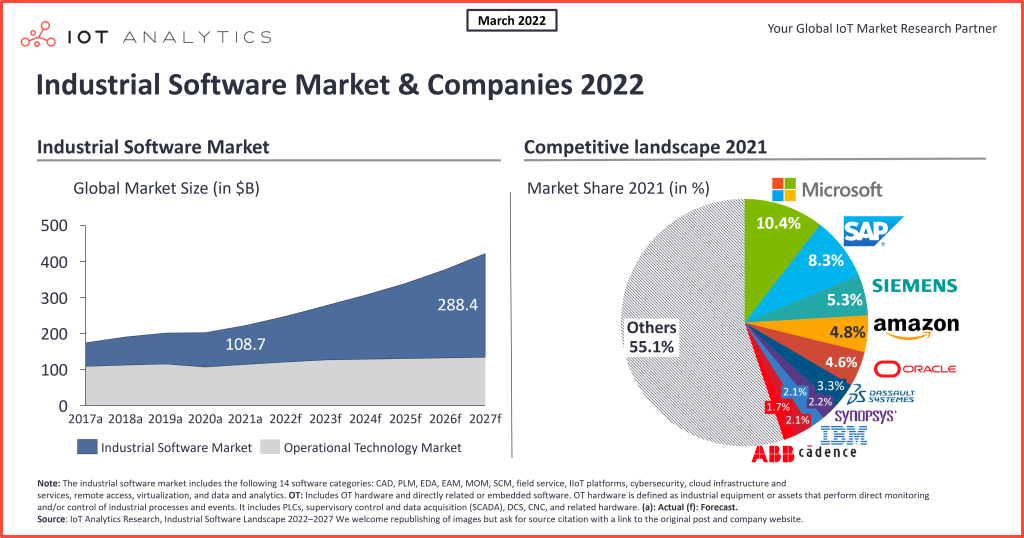
This image is property of iot-analytics.com.
Project Management
Project Planning Tools
Project planning tools are used to create and manage project plans, schedules, and tasks. They facilitate efficient project management, resource allocation, and collaboration among team members. Examples of project planning tools include Microsoft Project, Jira, and Asana. Project planning tools offer features such as task tracking, Gantt charts, and milestone management, allowing teams to plan and execute projects effectively, ensuring deadlines are met, and project objectives are achieved.
Task Management Software
Task management software allows users to create, track, and organize individual tasks or to-do lists. It provides a centralized platform for task management within a project or organization. Examples of popular task management software include Trello, Wunderlist, and Todoist. Task management software offers features such as task assignment, progress tracking, and deadline reminders, improving productivity and ensuring tasks are completed on time.
Collaboration Platforms
Collaboration platforms are used to facilitate communication, document sharing, and teamwork among project teams or departments. These platforms provide a centralized space for collaborative work, reducing reliance on email and fostering efficient collaboration. Examples of collaboration platforms include Microsoft Teams, Slack, and Google Workspace. Collaboration platforms offer features such as chat, file sharing, and project-based workspaces, enhancing communication and collaboration within the IT industry.
Data Analysis and Visualization
Statistical Analysis Systems
Statistical analysis systems are software tools used for analyzing and interpreting data, enabling data-driven decision-making. These systems provide a wide range of statistical techniques, data visualization options, and reporting capabilities. Examples of statistical analysis systems include IBM SPSS, SAS, and R. Statistical analysis systems offer features such as data modeling, hypothesis testing, and data visualization, empowering organizations to gain insights from their data and make informed business decisions.
Data Visualization Tools
Data visualization tools are used to present data in a visual and easily understandable format, making complex data sets more accessible and actionable. These tools provide various chart types, graphs, and interactive dashboards for data exploration and storytelling. Examples of data visualization tools include Tableau, Power BI, and QlikView. Data visualization tools offer features such as drag-and-drop interfaces, data connectivity, and interactive visualization options, enabling users to uncover patterns, communicate insights, and drive data-driven decision-making.
Business Intelligence Software
Business Intelligence (BI) software combines data analysis and visualization tools to transform raw data into meaningful insights and reports. BI software allows organizations to integrate data from multiple sources, perform advanced analytics, and generate dynamic reports for informed decision-making. Examples of popular BI software include MicroStrategy, Oracle Business Intelligence, and Google Data Studio. BI software offers features such as data integration, ad-hoc querying, and self-service reporting, enabling organizations to analyze complex data and drive business growth.
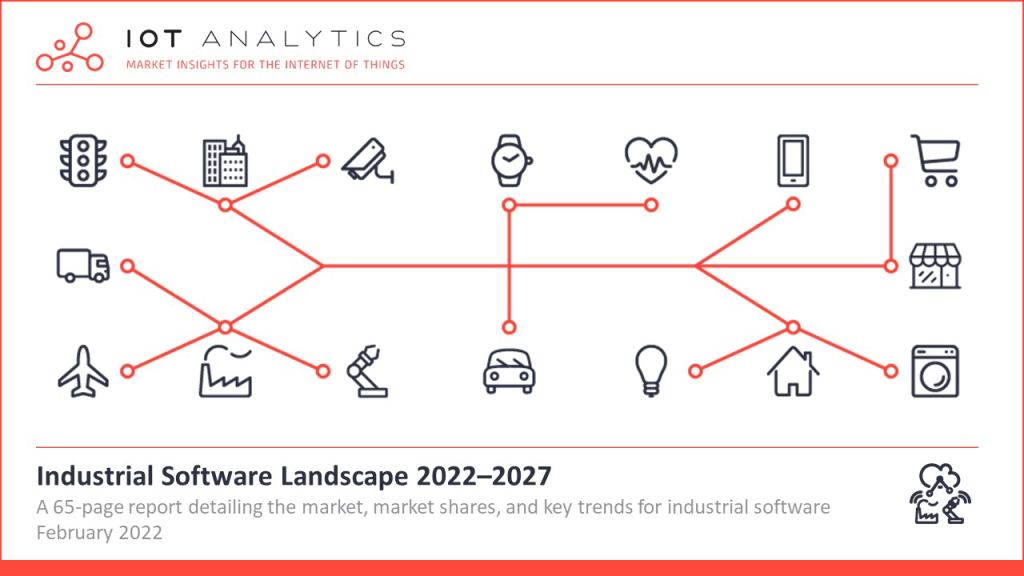
This image is property of iot-analytics.com.
Virtualization and Cloud Computing
Virtual Machine Software
Virtual machine software, mentioned earlier, enables the creation and management of virtual machines. Virtual machines allow multiple operating systems to run simultaneously on a single physical server or computer, providing flexibility and resource optimization. Examples of virtual machine software include VMware Workstation, VirtualBox, and Hyper-V. Virtual machine software offers features such as virtual machine cloning, snapshotting, and resource allocation, allowing efficient utilization of hardware resources and facilitating software testing and development.
Cloud Providers
Cloud providers offer infrastructure, platforms, and software services through a cloud computing model. They provide scalable and on-demand resources, eliminating the need for organizations to manage complex hardware and infrastructure. Examples of popular cloud providers include Amazon Web Services (AWS), Microsoft Azure, and Google Cloud Platform (GCP). Cloud providers offer a range of services, including virtual machines, databases, storage, and analytics, enabling organizations to leverage cloud computing and increase agility, scalability, and cost-effectiveness.
Containerization Tools
Containerization tools, such as Docker, provide a lightweight and portable solution for deploying and running applications. Containers encapsulate applications and their dependencies, allowing for consistent execution across different environments. Containerization tools offer features such as container management, resource isolation, and scalability, enabling organizations to streamline software deployment, improve application performance, and simplify infrastructure management.
Enterprise Resource Planning (ERP) Systems
Human Resources
ERP systems for human resources (HR) are used to manage and automate HR processes, including employee management, payroll, benefits administration, and talent acquisition. These systems provide a centralized database for employee information and enable efficient HR operations. Examples of ERP systems for HR include Oracle HCM Cloud, SAP SuccessFactors, and Workday. ERP systems for HR offer features such as employee self-service portals, workforce analytics, and compliance management, simplifying HR processes and enhancing employee satisfaction.
Financial Management
ERP systems for financial management are used to manage and automate financial processes, including accounting, budgeting, invoicing, and financial reporting. These systems provide real-time visibility into financial data, streamline financial operations, and support regulatory compliance. Examples of ERP systems for financial management include Oracle Financials Cloud, SAP S/4HANA Finance, and NetSuite. ERP systems for financial management offer features such as general ledger management, accounts payable/receivable, and financial planning, enabling organizations to optimize financial processes and make informed financial decisions.
Supply Chain Management
ERP systems for supply chain management are used to streamline and optimize supply chain operations, including procurement, inventory management, order fulfillment, and logistics. These systems provide end-to-end visibility into the supply chain, improve efficiency, and enhance customer service. Examples of ERP systems for supply chain management include SAP SCM, Oracle Supply Chain Management Cloud, and Infor CloudSuite. ERP systems for supply chain management offer features such as demand planning, supplier management, and order tracking, enabling organizations to reduce costs, mitigate risks, and increase supply chain responsiveness.
In conclusion, the IT industry relies on a diverse range of software tools to support various functions and processes. From operating systems and development tools to database management systems and security software, each category plays a crucial role in enabling efficient and secure IT operations. By leveraging these software tools, organizations can enhance productivity, improve decision-making, and drive innovation in an ever-evolving technological landscape.
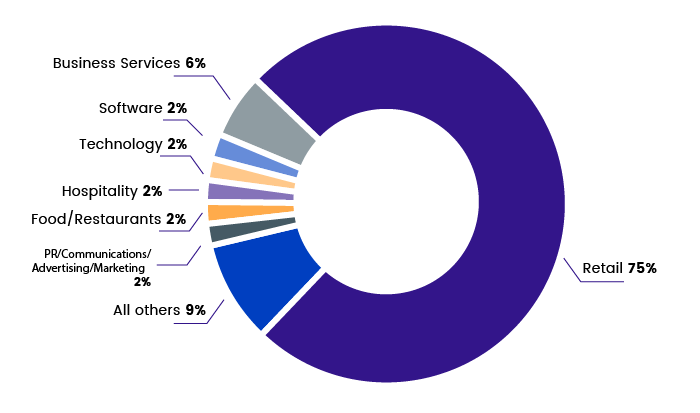
This image is property of rubygarage.s3.amazonaws.com.
